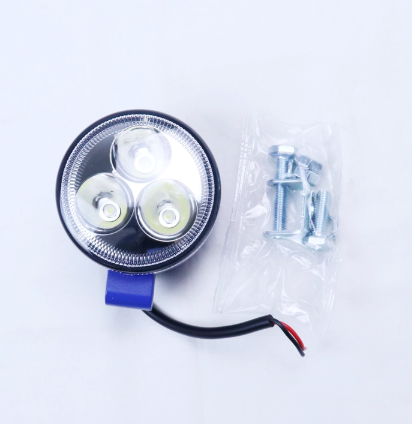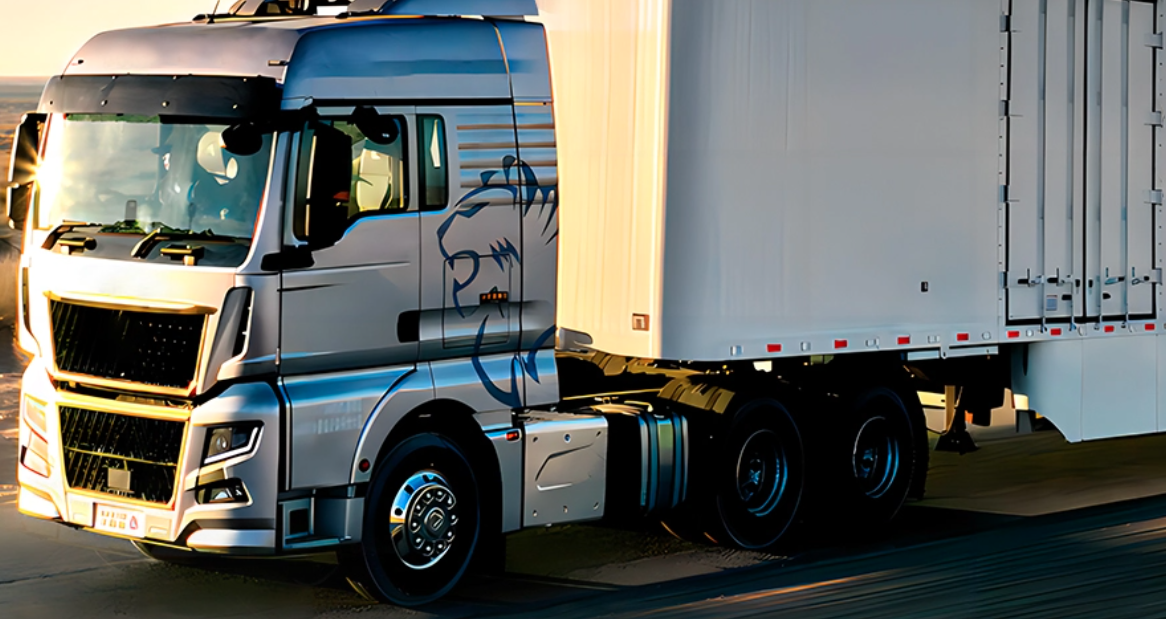Professional Truck Parts Supplier
- All
- Product Name
- Product Keyword
- Product Model
- Product Summary
- Product Description
- Multi Field Search
Views: 0 Author: Site Editor Publish Time: 2025-08-12 Origin: Site











Work truck lights are more than just accessories; they are vital components that enhance safety, improve visibility, and ensure compliance with legal standards. Properly functioning truck lights can significantly reduce the risk of accidents, especially during nighttime driving or in adverse weather conditions. Additionally, well-chosen lights can improve fuel efficiency and reduce maintenance costs over time. With a wide range of options available, it’s important to select the right type of truck light that meets your specific requirements.
Work truck lights come in various types, each designed to serve specific functions. Here are some of the most common types of work truck lights:
LED work lights are highly energy-efficient and offer long lifespans. They are available in various sizes and brightness levels, making them suitable for a wide range of applications.
Light bars are powerful lighting solutions that provide broad illumination. They are often used for off-road driving, construction sites, and emergency vehicles.
Beacon lights are used to signal and warn other drivers. They come in various colors and flash patterns, making them ideal for emergency vehicles and construction sites.
Interior lights enhance visibility inside the truck cab, making it easier to navigate and work during nighttime hours.
Warning lights are designed to attract attention and alert other drivers to potential hazards. They are commonly used on emergency vehicles, tow trucks, and construction sites.

The lighting system on a work truck is not just about illumination; it plays a vital role in safety, compliance, efficiency, and overall operational effectiveness. Here’s a detailed look at why selecting the right work truck light is so important:
Proper lighting can significantly reduce the risk of accidents, especially during nighttime driving or in adverse weather conditions. High-quality lights can improve visibility and help drivers see potential hazards more clearly. For example, LED lights with high lumen outputs (3,000 to 5,000 lumens) and a color temperature of around 5000K to 6500K provide bright, white light that enhances visibility without causing glare. This is particularly important for tasks that require precise attention to detail, such as construction work or emergency response operations.
Moreover, work truck lights are essential for signaling and warning other drivers on the road. Beacon lights and warning lights, often used in emergency vehicles and construction sites, attract attention and alert others to potential hazards. These lights come in various colors and flash patterns, each with specific regulatory requirements to ensure they serve their intended purpose effectively.
The right lighting can improve work efficiency by providing adequate illumination for tasks, reducing the time needed to complete jobs, and minimizing errors. Work lights and LED light bars, for example, offer high brightness levels and adjustable beam angles, making them suitable for a wide range of tasks. Whether you need focused illumination for detailed work or broad coverage for larger areas, choosing the right light can significantly enhance productivity.
Interior lights and dome lights are also crucial for nighttime operations. These lights ensure that the truck cab is well-lit, making it easier for drivers to navigate and access tools and equipment. By providing consistent and reliable illumination, work truck lights help reduce fatigue and improve overall job performance.
Investing in durable and energy-efficient lights can save money in the long run by reducing maintenance costs and extending the lifespan of the lighting system. LED lights, for instance, are highly energy-efficient and consume less power than traditional halogen lights. This not only reduces fuel consumption but also lowers the overall operational costs of the vehicle.
Durability is another important factor. Work truck lights are often used in harsh environments, such as construction sites or off-road conditions. Lights with high IP ratings (e.g., IP67 or IP68) for waterproofing and dust resistance can withstand exposure to water, dust, and other environmental elements. Shock and vibration resistance are also crucial for lights used in rough terrains, ensuring that the lights remain functional even under strenuous conditions.
Brightness is a critical factor when selecting work truck lights, as it directly impacts visibility and safety. Brightness is measured in lumens, with higher lumen outputs indicating brighter lights. For most work truck applications, a brightness level of 3,000 to 5,000 lumens is recommended. This range ensures that the lights are bright enough to illuminate work areas effectively without causing excessive glare.
Color temperature, measured in Kelvin (K), affects the light’s appearance and visibility. A color temperature of around 5000K to 6500K provides a bright white light that is ideal for most work truck applications. This range offers clear visibility and reduces eye strain, making it easier for workers to see details in low-light conditions. Lights with a color temperature in this range are also less likely to cause glare, which can be a safety hazard.
The size of the light should be appropriate for the available space on the truck. Work truck lights come in various sizes, from compact spotlights to larger light bars. It is important to measure the available space on your truck to ensure that the light you choose fits properly.
Mounting options are equally important. Common mounting methods include magnetic mounts, clamps, adjustable brackets, and permanent fixtures. Magnetic mounts and clamps offer the advantage of portability, allowing you to reposition the light as needed. Adjustable brackets provide flexibility in positioning, while permanent fixtures offer a secure and stable mounting solution. Consider the ease of installation and whether the light can be easily repositioned if needed.
Work truck lights are often used in harsh environments, making durability and weather resistance crucial factors. Look for lights with high IP ratings (e.g., IP67 or IP68) for waterproofing and dust resistance. These ratings ensure that the lights can withstand exposure to water, dust, and other environmental elements.
Shock and vibration resistance are also important, especially for lights used in rough terrains. High-quality lights are designed to withstand vibrations and shocks without compromising performance. This is particularly important for off-road vehicles and construction sites where the lights may be subjected to frequent jolts and impacts.
Work truck lights can be powered by the vehicle’s battery or an external power source. Battery-powered lights offer the advantage of portability, making them suitable for temporary use or in areas where a power source is not readily available. However, they may require frequent recharging, which can be inconvenient.
Wired lights are more convenient for permanent installation and do not require recharging. However, they may consume more power, which can affect the vehicle’s battery life. LED lights are highly energy-efficient and consume less power than traditional halogen lights. This makes them a cost-effective choice in the long run, as they reduce fuel consumption and maintenance costs.
The beam angle determines the spread of the light and is a crucial factor in selecting the right work truck light. Narrow beam angles (e.g., spotlights) provide focused illumination for long distances, making them ideal for tasks that require precise lighting. Wide beam angles (e.g., floodlights) provide broad illumination for close-up tasks, ensuring that larger areas are well-lit.
The light pattern also plays a role in the effectiveness of the light. Some lights offer adjustable beam angles or multiple light patterns, providing greater flexibility in how the light is used. Choose the beam angle and light pattern that best suits your specific needs, considering the type of tasks you will be performing and the environment in which you will be working.
Some work truck lights offer additional features that enhance their versatility and make them suitable for multiple applications. Adjustable brightness and dimming options allow you to control the intensity of the light, making it easier to adapt to different lighting conditions. Interchangeable lenses or filters can change the color or spread of the light, providing additional flexibility.
Other features to consider include waterproof and dustproof housings, rugged construction, and easy-to-use controls. These features can improve the overall performance and usability of the light, making it a valuable addition to your work truck.
Regular maintenance is essential to ensure the longevity and effectiveness of your work truck lights. Here are some tips:
Inspect your lights regularly to ensure they are functioning properly. Check for any signs of damage, wear, or corrosion.
Keep your lights clean and free from dirt and debris. Use a soft cloth and a mild cleaning solution to clean the lenses and housings. Protect your lights from harsh weather conditions by using waterproof covers or coatings.
Common issues with work truck lights include flickering, dimming, or complete failure. If you experience any of these issues, check the connections, wiring, and fuses. Replace any damaged components as needed.
Replace your lights if they are no longer functioning properly or if they are showing signs of wear. Consider upgrading to more efficient and durable lights to improve performance and reduce maintenance costs.

The best LED work truck light for construction depends on your specific needs. Look for lights with high brightness levels (3,000 to 5,000 lumens), durable construction, and waterproof ratings (IP67 or higher). LED light bars and work lights are popular choices for construction sites.
Work truck lights should have a brightness level of at least 3,000 lumens. For heavy-duty applications, lights with 5,000 lumens or more are recommended.
Many LED lights are designed for easy installation and can be installed by the average user. However, if you are not comfortable with electrical work, it is advisable to hire a professional to ensure proper installation and avoid potential safety issues.
Work lights are designed to provide illumination for specific tasks, while warning lights are used to attract attention and alert other drivers to potential hazards. Work lights typically have a focused beam, while warning lights have flashing patterns and are available in various colors.
Choosing the right work truck light depends on your specific needs, budget, and preferences. Consider factors such as brightness, energy efficiency, lifespan, durability, installation, and legal considerations when making your selection. YIBO offers a wide range of high-quality work truck lights that meet international standards and provide excellent performance and durability. Whether you’re looking to enhance safety, improve visibility, or upgrade your truck’s appearance, YIBO has a solution that fits your needs.
We encourage you to explore YIBO’s range of work truck lights and find the best option for your vehicle. Share your experiences and ask further questions in the comments below.